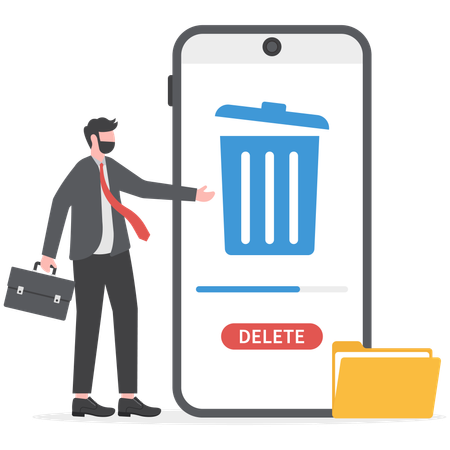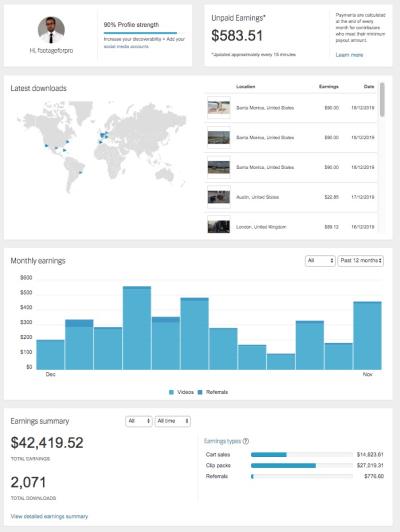Hey there! If you’re a contributor on Shutterstock, you probably spend a good chunk of time uploading and managing your images. The Shutterstock Artist Portal is your go-to dashboard where you can upload new files, track your sales, and manage your portfolio. Think of it as your personal control panel for everything related to your artwork on
Why You Might Need to Delete Files from Your Portfolio
There are several good reasons why you might want to delete files from your Shutterstock portfolio. Maybe you’ve uploaded images that didn’t meet your quality standards, or perhaps some files are outdated or no longer represent your current style. You might also want to remove duplicates or images that aren’t performing well in terms of sales or views. Additionally, if you’re rebranding or shifting your focus as an artist, cleaning out irrelevant files can help showcase your best work to potential buyers. Keeping your portfolio fresh and relevant not only makes it more attractive but can also boost your sales and visibility. Plus, deleting unnecessary files can help you stay within Shutterstock’s storage limits and avoid clutter. Overall, regular cleanup ensures your portfolio remains a true reflection of your best and most current work, making it easier for clients to find what they’re looking for—and for you to stay organized and motivated.”
Prerequisites for Deleting Files on Shutterstock Artist Portal
Before you dive into deleting files from your Shutterstock Artist Portal, there are a few important things to keep in mind. First and foremost, ensure you have access to your account and are logged in with the correct credentials. Without being signed in, you won’t be able to manage or delete your files.
It’s also good to double-check your permissions. If you’re working within a team or collaborative environment, confirm that your role allows you to delete files. Some accounts might have restrictions set by the administrator, preventing accidental or unauthorized deletions.
Another essential prerequisite is understanding which files you want to delete. Make a list or note of the specific files—whether they are images, vectors, or videos—and their titles or IDs. This way, you can easily locate them during the deletion process.
Additionally, consider the implications of deleting files. Once a file is removed, it’s typically gone from your portfolio and search results. If you think you might want the file later, consider downloading a backup before deletion, just in case.
Finally, while deleting files is straightforward, make sure you’ve saved any relevant metadata or notes associated with your work. This can help you keep your portfolio organized and prevent accidental deletion of important assets.
Step-by-Step Instructions for Deleting Files
Now that you’re all set with the prerequisites, let’s walk through the process of deleting files from your Shutterstock Artist Portal step by step. It’s a simple process, and I’ll break it down to make it as easy as possible.
Step 1: Log into Your Account
Start by visiting the Shutterstock Artist Portal website. Enter your login details—email and password—and click the “Log In” button. Once logged in, you’ll land on your dashboard where all your files are listed.
Step 2: Navigate to Your Portfolio
From the dashboard, look for the section labeled “My Portfolio” or similar. This is where all your uploaded content is stored. Click on it to view your files.
Step 3: Locate the File(s) You Want to Delete
Scroll through your portfolio or use the search bar to find the specific file you wish to delete. You can search by title, keyword, or file ID if you have that information handy.
Step 4: Select the File(s)
Once you find the file, check the box or click on the thumbnail to select it. If you want to delete multiple files at once, repeat this step for each item.
Step 5: Click on the Delete Option
Look for the “Delete” button—often represented by a trash bin icon—located somewhere near your selected files or in a menu at the top or side of the interface. Click on it.
Step 6: Confirm Deletion
A confirmation prompt will usually appear, asking if you’re sure about deleting the selected files. Double-check that you’ve selected the correct items, then click “Yes” or “Confirm” to proceed.
Step 7: Verify the Files Are Removed
After confirming, the files should disappear from your portfolio. To be sure, refresh the page or navigate away and back to your portfolio. Your deleted files should no longer be visible.
And that’s it! Deleting files from your Shutterstock Artist Portal is quick and easy once you know the steps. Just remember to double-check what you’re deleting to avoid removing something important unintentionally.
Tips for Managing Your Portfolio Effectively
Keeping your Shutterstock portfolio organized and up-to-date is key to attracting buyers and making the most of your creative efforts. Think of your portfolio as your storefront—first impressions matter! Here are some practical tips to help you manage it effectively:
Regularly Review and Curate Your Content
Set aside some time every few months to go through your uploaded files. Remove outdated, low-quality, or underperforming images. Highlight your best work and ensure that your portfolio reflects your current style and skills. Remember, quality beats quantity!
Use Clear and Consistent Naming Conventions
When uploading new files, use descriptive, keyword-rich filenames. This not only helps you stay organized but also improves discoverability on the platform. Consistency in naming makes it easier to locate files later, especially when managing large portfolios.
Organize Files into Folders or Collections
If the platform allows, group related images into collections or folders. For example, separate your illustrations from your photographs or categorize by themes or styles. This makes it easier for you to find specific pieces and showcase cohesive sets to clients.
Utilize Metadata and Keywords Wisely
Adding relevant keywords and detailed descriptions enhances your images’ visibility in Shutterstock searches. Think about what buyers might search for and incorporate those terms naturally. Well-tagged images are more likely to be purchased!
Stay Informed About Shutterstock Policies
Platforms often update their guidelines regarding file submission, deletion, and portfolio management. Keep an eye on Shutterstock’s announcements or help center to stay compliant and avoid any surprises.
Track Your Performance
Use Shutterstock’s analytics tools to see which images are performing well and which aren’t. Focus on maintaining or improving high-performing content, and consider removing or updating those that aren’t getting views or downloads.
Backup Your Work
Before deleting any files from your portfolio, ensure you have copies saved elsewhere. It’s always a good idea to keep a local backup of your creations in case you want to reuse or re-upload them in the future.
By implementing these tips, managing your Shutterstock portfolio can become a smooth, stress-free process that helps you showcase your best work and attract more buyers. Remember, your portfolio is a reflection of your artistry—keep it fresh, relevant, and well-organized!
Frequently Asked Questions About File Deletion on Shutterstock
Deleting files from your Shutterstock Artist Portal can raise a few questions, especially if you’re new to the platform. Here are some common questions and straightforward answers to help clarify the process:
Q1: Can I delete multiple files at once?
Yes, Shutterstock allows you to select multiple files simultaneously for deletion. This is a huge time-saver if you want to clean up your portfolio quickly. Just use the checkboxes next to each file, then click on the delete option.
Q2: Will deleting a file affect its sales history or earnings?
No, deleting a file from your portfolio does not impact past sales or earnings. All previous transactions remain intact. However, once a file is deleted, it cannot be purchased again, so consider whether you might want to re-upload it later.
Q3: Is it possible to restore a deleted file?
Typically, once you delete a file from the Shutterstock Artist Portal, it cannot be recovered through the platform. Make sure you really want to delete it before confirming. If you think you might need it later, consider hiding it instead of deleting.
Q4: How long does it take for a deleted file to be removed from the platform?
The removal is usually immediate after you confirm the deletion. However, it might take a little time for the changes to reflect across all parts of the platform or to clear from cached pages.
Q5: Are there any restrictions on deleting files?
Yes, some files might be restricted from deletion if they are involved in ongoing licensing or have pending payments. If you encounter issues, check the file’s status or contact Shutterstock support for assistance.
Q6: Should I notify Shutterstock if I want to delete a file for legal reasons?
Absolutely. If your files contain sensitive or copyrighted content that needs to be removed promptly for legal reasons, contact Shutterstock support directly. They can expedite the process and ensure compliance.
Hopefully, these FAQs help demystify the file deletion process on Shutterstock. If you’re ever unsure, their help center and customer support are always good resources. Managing your portfolio thoughtfully ensures your creative work is represented exactly how you want it to be!
Conclusion and Additional Resources
Managing your files efficiently on the Shutterstock Artist Portal is essential for maintaining an organized portfolio and ensuring your work is accurately represented. By following the step-by-step process outlined above, you can confidently delete outdated or unwanted files, freeing up space and streamlining your submissions. Remember to double-check your selections before confirming deletions to avoid accidental removal of important work.
For further assistance, consider exploring these additional resources:
- Shutterstock Help Center: Comprehensive guides and FAQs on managing your account and files.
- Artist Community Forums: Connect with fellow creators for tips, advice, and shared experiences.
- Video Tutorials: Visual step-by-step instructions available on Shutterstock’s official YouTube channel.
Staying informed about platform updates and best practices will help you make the most of your Shutterstock Artist Portal experience. Should you encounter any issues, don’t hesitate to contact Shutterstock support for personalized assistance. Keeping your portfolio clean and up-to-date not only improves your workflow but also enhances your visibility and potential earnings. Happy uploading and managing your creative assets!



